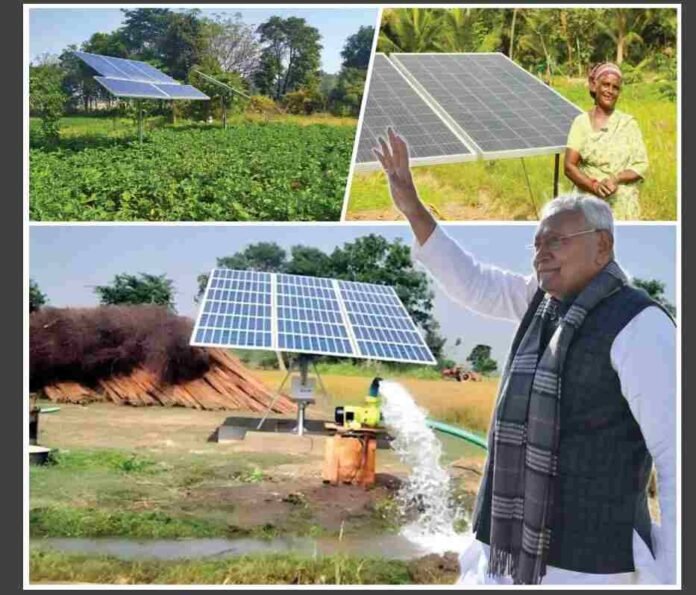1,200 MW Solar Power to Energize Feeders in Third Phase of Implementation
Patna, March 1 – The state government is ensuring a dedicated power supply for agricultural activities through specialized feeders. Moving forward, these feeders will be powered by solar and renewable energy sources. In the third phase of this initiative, 1,200 MW of solar power will be generated and supplied to agricultural feeders.
Chief Minister Nitish Kumar has consistently emphasized the importance of renewable energy, integrating it into the Jal-Jeevan-Hariyali scheme launched in 2019. Recognizing solar power as a sustainable energy solution, the state is taking extensive steps to harness its potential.
Transition from Thermal to Solar Energy
Currently, all power supplied to farmers through dedicated feeders comes from thermal power plants, making it an expensive option. To provide a cost-effective and sustainable alternative, the government is transitioning these feeders to solar energy.
Under the solarization plan, the government aims to generate electricity during daylight hours, ensuring uninterrupted daytime irrigation for farmers. This initiative will reduce their dependency on nighttime irrigation, improving efficiency and convenience.
The Energy Department has initiated the tender process for this phase, with official notifications soon to be published in newspapers by the Information & Public Relations Department.
Key Benefits of Solar-Powered Agricultural Feeders
Energy Minister Bijendra Prasad Yadav emphasized that shifting to solar power will ensure a stable electricity supply for farmers, reducing their reliance on subsidies and promoting renewable energy adoption in the state.
Chief Secretary Amrit Lal Meena highlighted the significance of this initiative in addressing future energy demands and tackling drought-like situations. In the second phase, 112 companies have participated in the tendering process, indicating strong investor interest and sustainable returns.
Power Supply Expansion & Farmer Benefits
- Completion Target by June 2025: By June this year, all remaining farmers will have access to dedicated electricity for irrigation and other agricultural needs. Of the required 3,000 feeders, 2,500 have already been installed, with the remaining to be completed soon.
- 2.85 Lakh Pending Agricultural Connections: The government has received applications from 2.85 lakh farmers awaiting electricity connections. Special instructions from the Chief Minister ensure these will be provided by June 2025.
- 5.55 Lakh Farmers Connected: Under the Mukhyamantri Krishi Pump Vidyut Connection Yojana, 5.55 lakh farmers have already received power connections, with plans to cover all remaining applicants by year-end.
Cost & Subsidy Benefits
- The state consumes 8,000 MW of electricity, with 1,150 MW allocated for irrigation.
- Power from thermal plants costs ₹6.74 per unit, but farmers receive it at a heavily subsidized rate of ₹0.55 per unit, amounting to ₹3,970 crore in annual government subsidies.
Progress in Solar Energy Projects
- First Phase Achievements: 1,235 dedicated feeders were installed under 843 power substations.
- Second Phase Developments: The state has invited tenders for 1,600 MW of solar power to energize 3,681 agricultural and dedicated feeders.
- Existing Solar Installations:
- 180 MW of solar projects commissioned.
- Floating solar plants established in Darbhanga and Supaul.
- Grid-connected rooftop solar installations:
- 91 MW on 9,821 government buildings.
- 18.43 MW on 5,182 private buildings.
- Solar streetlights installed across all panchayats under the Mukhyamantri Solar Street Light Yojana.
Affordable Power: 10 Times Cheaper Than Diesel
The government provides over 92% subsidy on electricity bills for farmers, making solar power ten times cheaper than diesel-based irrigation. This initiative not only ensures uninterrupted and high-quality electricity but also accelerates agricultural industrialization.
With over 5.6 lakh farmers already benefiting from subsidized electricity, the transition to solar-powered agricultural feeders marks a significant step toward sustainable and cost-effective farming in the state.


